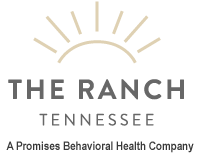When a person limits the type or variety of foods they eat, they are often characterized as “picky eaters” so long as they don’t also have underlying body image or dysmorphia issues. Body dysmorphia is when a person has uncontrollable negative thoughts, for hours at a time, about real or perceived flaws they believe they have. While some people lack a general interest in eating many foods or avoid a number of foods based on one or more sensory issues such as the way it looks, smells or feels texture-wise, most still are able to meet appropriate nutritional and energy requirements. But when is someone who appears to be a picky eater really suffering from avoidant-restrictive food intake disorder?
What Is Avoidant-Restrictive Food Intake Disorder?
The Diagnostic and Statistical Manual of Mental Disorders, 5th edition (DSM-5) defines avoidant-restrictive food intake disorder as an eating disorder that does not meet the criteria for anorexia nervosa or bulimia nervosa, but includes:
- A disturbance in eating or food demonstrated by persistent failure to meet appropriate nutritional or energy needs leading to one or more of the following:
- Significant weight loss or failure to gain weight in children
- Significant nutritional deficiency
- Dependence on enteral feeding (through the intestines) or oral nutritional supplements
- Significant interference with psychosocial function
- The disturbance is not explained by lack of food availability or a culturally sanctioned practice (such as fasting)
- The disturbance does not appear in the context of anorexia nervosa or bulimia nervosa and there is no evidence of body dysmorphia
- The disturbance cannot be attributed to a concurrent medical condition or other mental disorder
Nearly 50 percent of individuals diagnosed with an eating disorder do not meet the criteria for anorexia nervosa or bulimia nervosa. Additionally, about 14% of newly diagnosed eating disorder patients suffer from avoidant-restrictive food intake disorder and usually are children or infants.
Picky Eater?
So how can you tell the difference between picky eating and avoidant-restrictive food intake disorder? Picky eaters may discriminate in the type of foods they will eat, but still meet appropriate nutritional requirements. Examples include:
- Failure to eat an adequate variety of food
- Failure to eat or try new foods
- Rejecting food for sensory reasons such as smell, flavor, look or texture
But someone suffering from avoidant-restrictive food intake disorder significantly restricts their eating beyond what might be considered reasonable. Examples include a child who:
- Will only eat three items (such as cereal, macaroni, or peanut butter and jelly)
- Will only eat foods of a certain color
- Will only eat food that is soft
- Exhibits an unreasonable fear of eating (believing that eating food will cause vomiting, choking or stomach pain)
These excessively restrictive eating habits interfere with the ability to meet nutritional needs, and typically lead to significant medical problems.
Treatment for ARFID
Treatment for avoidant-restrictive food intake disorder usually includes individual, group and family therapy focused on anxiety issues and coping mechanisms, along with medication if necessary. If you believe someone you care about suffers from avoidant-restrictive food intake disorder, be sure to speak with your medical provider about diagnosis, interventions and treatment. Sources: https://www.jahonline.org/article/S1054-139X(13)00771-4/fulltext – Characteristics of Avoidant/Restrictive Food Intake Disorder in Children and Adolescents: A “New Disorder” in DSM-5 – https://www.ncbi.nlm.nih.gov/pmc/articles/PMC4725687/ – Update on eating disorders: current perspectives on avoidant/restrictive food intake disorder in children and youth

